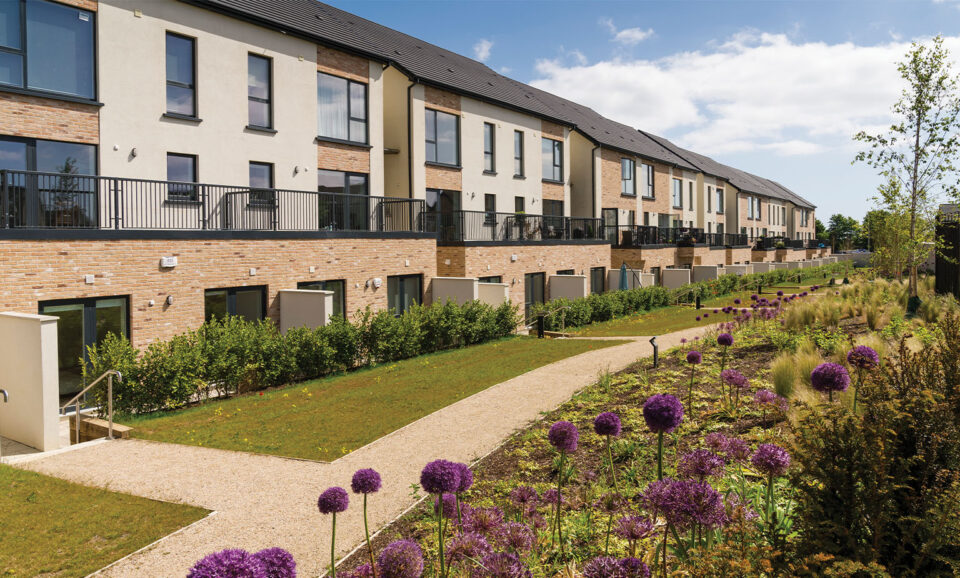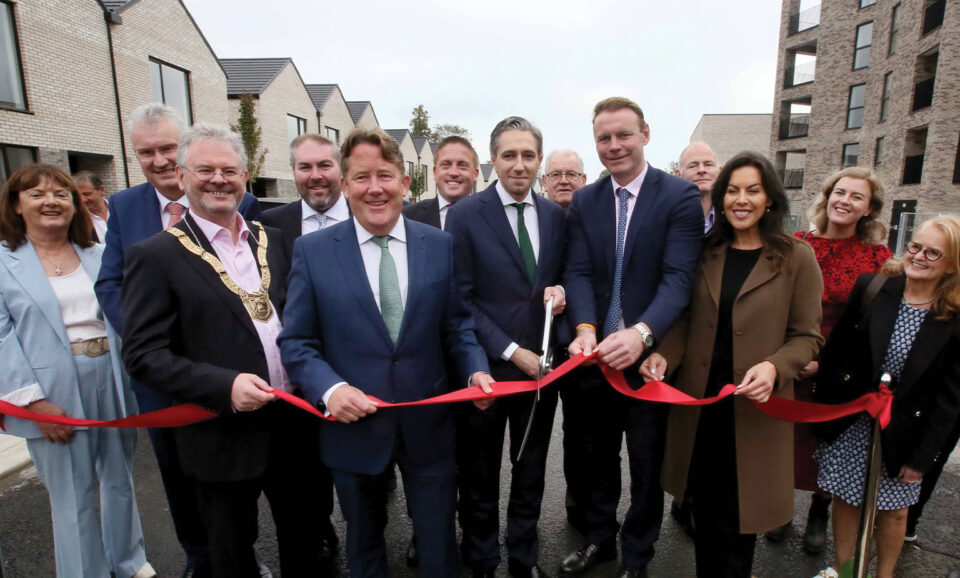
Housing for All delivery revision delayed
7th November 2024
Minister of State Alan Dillon TD: Transforming Ireland’s planning system
7th November 2024Ensuring the success of compact development in Ireland: Research by The Housing Agency

Pearl District before.
The National Planning Framework (NPF) is the overarching policy and planning framework for the social, economic and cultural development of Ireland. The purpose of the NPF is to ensure that as the population of Ireland grows, it does so in a way that is sustainable in terms of its economic, social and environmental impact.
Work undertaken by the ESRI and published in June 2024 shows that the population of Ireland grew by 9 per cent, (422,000 people), from 2016-2022 and may grow by a further 922,000 people up to 2040.
The report finds that net migration is a key driver of this growth and that while all regions are expected to see population increases, these will be stronger in the eastern and midlands region than in western and southern regions, which are expected to experience relatively lower population growth.
The NPF cautions against failure to take a more strategic approach to planning, with consequences including continued sprawl, as well as an ongoing shift in population and jobs towards the east of the country. Urban sprawl is associated with greater car dependency, loss of agricultural land, longer commuting times and higher CO2 emissions.
To avoid urban sprawl, planning for compact development is essential. Compact development, sometimes called compact growth or smart growth, means the development of housing and businesses within or near existing settlements. Compact growth is a National Strategic Outcome in the NPF.
About the research
The Housing Agency’s publication Case Study Analysis for Sustainable Compact Development is the culmination of research, undertaken by Indecon, on how other countries, with a proven track record in compact development, manage to achieve their outcomes.
The research examines compact development in countries or regions that are considered to be good models. Four case studies were identified:
- Aspern Seestadt in Vienna, Austria;
- Nordhavn in Copenhagen, Denmark;
- The Pearl District in Portland, Oregon, USA; and
- Vauban in Freiburg, Germany.
The analysis examined the development process for each site, undertaking interviews with stakeholders, gathering insights on how developments were financed, the obstacles encountered along the way, and how these challenges were overcome. The research investigated what, if any, policy incentives were used to encourage compact development.

Pearl District after.
What did the research tell us?
The success of sustainable compact development can be seen in The Pearl District in Portland. The report notes: “Within decades, through collaboration between public and private entities, the redubbed ‘Pearl District’ has become one of the most sought-after neighbourhoods in the city, as well as one of the most well-known examples of ‘urban renewal’ and ‘compact growth’ in the United States. The area is characterised by the preservation and rejuvenation of many of its original buildings, as well as the presence of trees and small green spaces within its densely populated, urban environment. The district is zoned as mixed-use, and is home to apartment blocks, grocery stores, and coffee shops, as well as office buildings, loft conversions, and recreational spaces.”
The research found that in the case studies examined:
- Most cities impose greenbelts that make development of greenfield sites challenging.
- Significant public investment in transport and other enabling infrastructure is usually required to facilitate large scale compact urban growth developments.
- Districts contain a mix of residential and commercial development, as well as an appropriate mix of private and social/affordable housing. This is staged to ensure an element of ‘organic’ growth in both, rather than commercial development following residential or vice versa.
- Establishment of a development company with the powers and resources to facilitate and coordinate work on large-scale compact urban growth developments was an important factor in success.
- Public investment via development companies is financed by a form of land value sharing. This has allowed the developments considered in the research to finance infrastructure development, pooling of land, land remediation, and other site preparation costs.
- Compact urban growth developments often centre around public amenities such as, a lakeshore, riverside, or harbour. Amenities such as these provide a sense of identity and improve the placemaking and liveability of the developments.
What lessons can Ireland learn from this research?
The research found that the availability of public transport was crucial to the success of these developments and would indicate that in Ireland high-density compact development would have the most success where there is good public transport and other public infrastructure.
In addition, the existence of a development company was seen as key. These development companies have a focus on delivering specific compact urban growth projects. Previous examples in Ireland include the Dublin Docklands Development Authority and the Cork Docklands Delivery Office.
The research also highlighted the benefits of implementing mechanisms of land value capture, and supportive land-use policies that facilitate land value capture.
Finally, the report provides valuable insights for policymakers in Ireland, as to what may constitute best practice when it comes to achieving compact development.

To learn more about The Housing Agency’s publications:
www.housingagency.ie/publications






